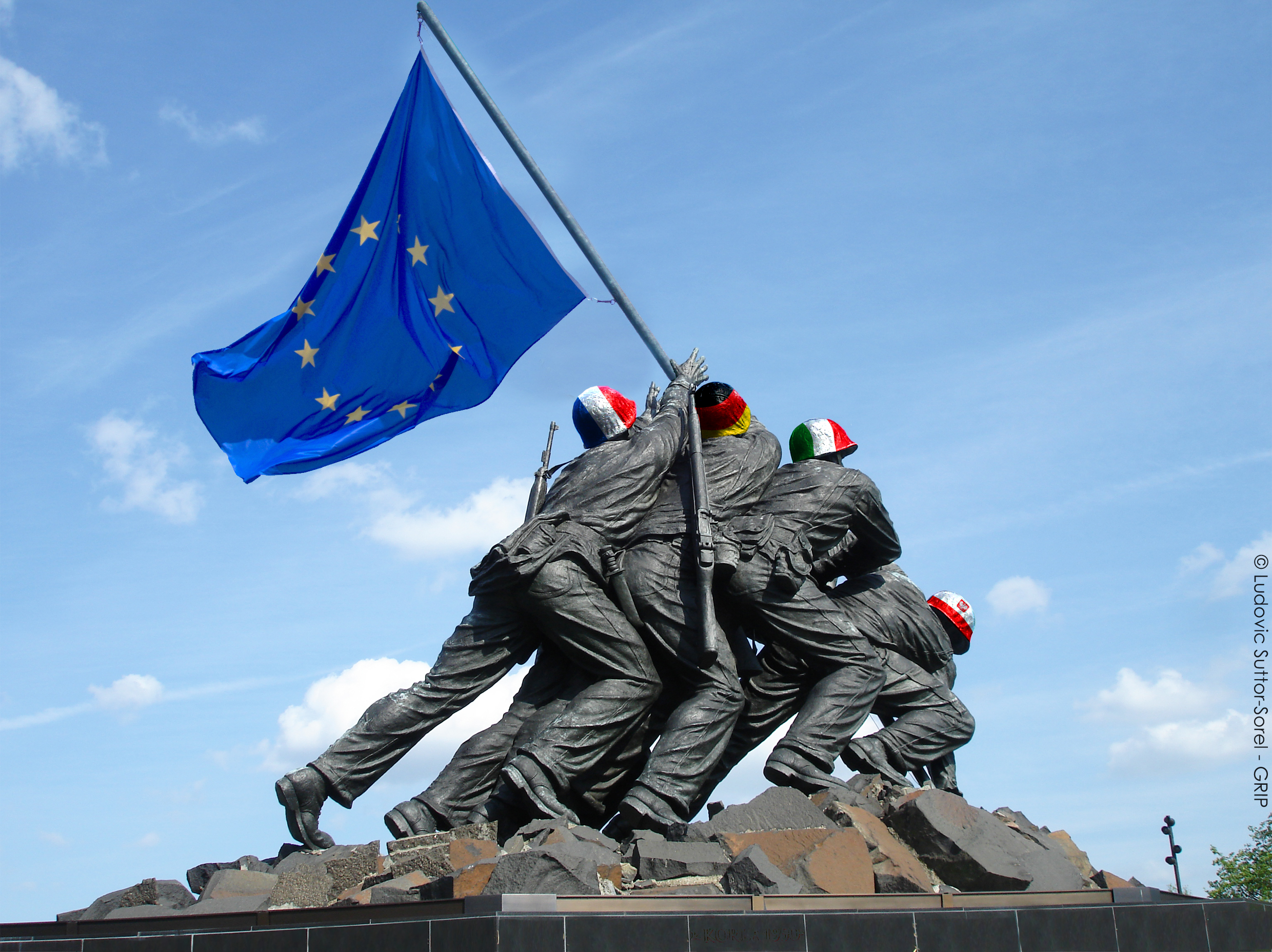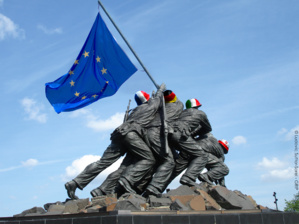The desire to form a European army, or at least a sizable capacity for common defense operations, has been on every political leader’s mind for decades. So far, little has come of it, despite little or no direct military opposition to the projects. The members of the Union have systematically been blocked in their integration attempts by a variety of factors, ranging from widely varying military budgets, to different geopolitical challenges. In fact, more failures to integrate European armies can be ascribed to practical factors than to political ones: few politicians in European history have ever voiced their outright opposition to a military alliance within the EU, and Europe’s capacity to ensure its own defense. But instead of making a political decision and then forcing it downwards onto military institutions, several new attempts have been made, from the ground up, and are achieving far better results.
The new angle chosen to facilitate further military integration started with the establishment of common rules of engagement, during operation Artemis. The EU-led military operation unified members into a France-led military coalition to bring mass killings in the DRC to an end, in 2003. Stale Ulriksen writes: “Operation Artemis, carried out in the Democratic Republic of Congo from June to September 2003 on the request of the United Nations, was the European Union's first independently launched military operation and its first operation in Africa. France, supported by Britain, was the driving political force working to secure EU engagement as well as the main military contributor to the operation.” This operation was the first to be carried out outside NATO frameworks or bilateral cooperation. Prior to operations, common rules of engagement had to be set in place, in order to unify military methods and safeguard the coherence of the operation. The success of the operation was a milestone for European defense but showed how Europe the need to harmonize its equipment, to avoid complications caused by discrepancies in equipment. In the past 15 years, Europe has therefore pushed considerably for the creation of military standards, which will serve as the backbone of military integration.
France and England, for instance, have led the way in medium-caliber weapons development, with the creation of a new type of ammunition designed for armored personnel carriers and infantry fighting vehicles. Cased Telescopic Ammunition 40 (CTA 40) is the result of cooperation between NEXTER and Royal Ordnance, and enables firepower superior to all known equivalent calibers, while being lighter and more compact. APCs and IFVs are therefore able to increase their range and protection, and simultaneously safeguard their mobility. Interest for the new caliber has been widespread over Europe and beyond and will likely be the new standard in the future European army. France, England and Belgium have already resorted to the new gun on their Ajax APCs Jaguars and CAMO combat system.
NEXTER and KMW, respectively French and German, have also launched a successful joint venture to become Europe’s main battle tank supplier. KNDS is now the result of the association of Krauss-Maffei Wegmann and Nexter. Joining development teams will enable to compete financially with non-European manufacturers (which were until now cheaper) while maintaining operational performance capacities (which both countries already had). KNDS is state-backed and has already encountered a favorable reception from the European market. Defense specialist Pierre Tran writes : “A sought-after alignment of French and German arm export policy is key to KNDS. The partner companies, Krauss-Maffei Wegmann and Nexter, have long competed with each other, but now they seek to work cooperatively to snag opportunities in the world market [...] If there is political clearance for sales limited to the European market, then KNDS could focus its efforts. That includes building new factories in Europe, Mayer said. The European market for main battle tanks is worth an estimated €80 billion (U.S. $93 billion) based on an estimated park of 8,000 tanks, worth €10 million per unit”. The new dynamic is still at its beginnings but shows promising potential for Europe’s defense capacities. And much is still left to do.
Most countries in Europe are unable to take on entire armament programs, but that doesn’t mean business is over for subcontractors, quite the opposite. Large industrial firms will increasingly take the lead on arms sales, but will also farm out a large part of the work to European partners, in the current phase of market consolidation. Despite wishful thinking from their respective governments, it is unlikely that any of the major military powers of Europe, save Germany and France, will take the lead again in large military equipment programs, in naval or air forces. But the technological difficulty can be turned into a political advantage, and countries such as Spain, Portugal, Greece and Italy can benefit the tightening of links with one of the European military leaders. Germany and France both possess the technological and industrial power to produce equipment which ranks high on the global market. France, in addition, has an outstanding foreign policy and participates intensely in allied operations. Through this increased interaction, Europe will be more and more resorted to on the global market, as prices will mechanically drop. In the end, a rising number of contracts should come from Germany, even more so, France.
Deciding to create a continental army has been done many times and has systematically failed. But the recent announcement of the renewed desire to do, by Paris and Berlin, is virtually the first since the turn of the century and has a considerably better chance of succeeding, now that practical, industrial and tactical decisions have been carried out. Europe may be closer than ever to the strategic shape-shift it has not-so-secretly desired for almost a century.
The new angle chosen to facilitate further military integration started with the establishment of common rules of engagement, during operation Artemis. The EU-led military operation unified members into a France-led military coalition to bring mass killings in the DRC to an end, in 2003. Stale Ulriksen writes: “Operation Artemis, carried out in the Democratic Republic of Congo from June to September 2003 on the request of the United Nations, was the European Union's first independently launched military operation and its first operation in Africa. France, supported by Britain, was the driving political force working to secure EU engagement as well as the main military contributor to the operation.” This operation was the first to be carried out outside NATO frameworks or bilateral cooperation. Prior to operations, common rules of engagement had to be set in place, in order to unify military methods and safeguard the coherence of the operation. The success of the operation was a milestone for European defense but showed how Europe the need to harmonize its equipment, to avoid complications caused by discrepancies in equipment. In the past 15 years, Europe has therefore pushed considerably for the creation of military standards, which will serve as the backbone of military integration.
France and England, for instance, have led the way in medium-caliber weapons development, with the creation of a new type of ammunition designed for armored personnel carriers and infantry fighting vehicles. Cased Telescopic Ammunition 40 (CTA 40) is the result of cooperation between NEXTER and Royal Ordnance, and enables firepower superior to all known equivalent calibers, while being lighter and more compact. APCs and IFVs are therefore able to increase their range and protection, and simultaneously safeguard their mobility. Interest for the new caliber has been widespread over Europe and beyond and will likely be the new standard in the future European army. France, England and Belgium have already resorted to the new gun on their Ajax APCs Jaguars and CAMO combat system.
NEXTER and KMW, respectively French and German, have also launched a successful joint venture to become Europe’s main battle tank supplier. KNDS is now the result of the association of Krauss-Maffei Wegmann and Nexter. Joining development teams will enable to compete financially with non-European manufacturers (which were until now cheaper) while maintaining operational performance capacities (which both countries already had). KNDS is state-backed and has already encountered a favorable reception from the European market. Defense specialist Pierre Tran writes : “A sought-after alignment of French and German arm export policy is key to KNDS. The partner companies, Krauss-Maffei Wegmann and Nexter, have long competed with each other, but now they seek to work cooperatively to snag opportunities in the world market [...] If there is political clearance for sales limited to the European market, then KNDS could focus its efforts. That includes building new factories in Europe, Mayer said. The European market for main battle tanks is worth an estimated €80 billion (U.S. $93 billion) based on an estimated park of 8,000 tanks, worth €10 million per unit”. The new dynamic is still at its beginnings but shows promising potential for Europe’s defense capacities. And much is still left to do.
Most countries in Europe are unable to take on entire armament programs, but that doesn’t mean business is over for subcontractors, quite the opposite. Large industrial firms will increasingly take the lead on arms sales, but will also farm out a large part of the work to European partners, in the current phase of market consolidation. Despite wishful thinking from their respective governments, it is unlikely that any of the major military powers of Europe, save Germany and France, will take the lead again in large military equipment programs, in naval or air forces. But the technological difficulty can be turned into a political advantage, and countries such as Spain, Portugal, Greece and Italy can benefit the tightening of links with one of the European military leaders. Germany and France both possess the technological and industrial power to produce equipment which ranks high on the global market. France, in addition, has an outstanding foreign policy and participates intensely in allied operations. Through this increased interaction, Europe will be more and more resorted to on the global market, as prices will mechanically drop. In the end, a rising number of contracts should come from Germany, even more so, France.
Deciding to create a continental army has been done many times and has systematically failed. But the recent announcement of the renewed desire to do, by Paris and Berlin, is virtually the first since the turn of the century and has a considerably better chance of succeeding, now that practical, industrial and tactical decisions have been carried out. Europe may be closer than ever to the strategic shape-shift it has not-so-secretly desired for almost a century.






